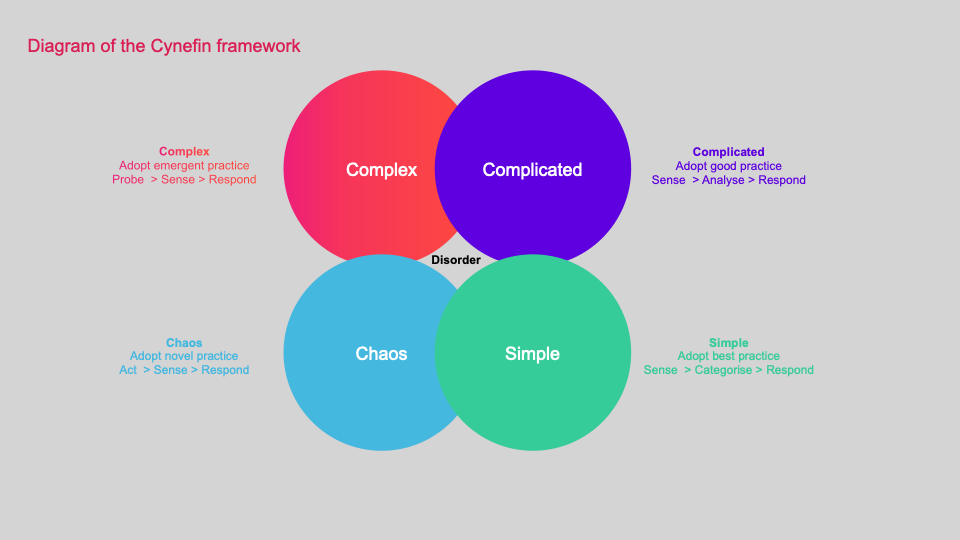How to be a more agile organisation - part 1
Leadership Blog | 6 minute read

Written by Ric Bulzis

Agility is a mindset first, not a process
Being agile as an organisation has been the topic of the day for a while now. In fact, it’s gone from being topic of the day to being topic of the century, with organisations realising its importance over 50 years ago. So what are the challenges to implementing it?
In order to cultivate a culture of agility, we need to first understand what it is - which is speed and flexibility.
Much in the same way a boxer needs to instantaneously register, and react to, their opponent’s punches flying their way, an organisation needs to comprehend and act against issues as soon as they arise.
And much like the boxer, this is down to a mindset. This problem can’t be solved by throwing processes at it. While some processes are useful in achieving agility, they won’t help if you don’t already have an agile mindset.
The case for agility
In the 1940s, the first computer as we know them today was built. It weighed over thirty tonnes and had the storage space to fit twenty words – less words than most comments on social media sites. The delay between data being input into these early computers and their subsequent calculated outputs was extremely protracted, often taking hours, days or weeks to complete computational processes.
Fast forward to the present day and, thanks to spellbinding advances in technology, we now have computers that are so light we don’t even feel them nestled in our pockets, where they spend most of their life.
Or at least that’s where they spend the time that they’re not in our hands being used to make purchases, play games, sort out our finances, or the countless other things they can do at around three billion times the clock speed of that first computer from the 1940s.
This serves as an analogy for the wider world in which we live. We live in a real-time world, where the market is as fast as an app download. With real-time markets come real-time disruptions, and issues can arise at the drop of a hat. And it’s not just the speed of disruption; the sheer scale of it is mindboggling too. Entire markets can be transformed by one entirely unexpected competitor.
While technological advances have created boundless benefits, they have also created a complex, and at times chaotic climate for businesses to operate as reduced barriers to entry mean market disruption can come from anyone, anywhere. Where historically businesses could more easily see or predict the relationship between causes and effects in their respective markets, today businesses are faced with more “unknown unknowns” and cause and effect can, at times, be altogether undecipherable. As a result the world has become what has become popularly known as VUCA – a US Military anacronym meaning Volatile, Uncertain, Complex and Ambiguous.
It is for these reasons that agility is paramount. Being able to deal with breakdowns as they arise can be the difference between swimming and sinking.
Becoming agile
Our context is decisive and the context that decision-making is happening within should define the approach we take. To understand in any given moment which context we are operating within we should assess the relationship between cause and effect – asking ourselves if we’re dealing with:
- Known Knowns,
- Known Unknowns (like in a game of Chess),
- Unknown Unknowns (like in a game of Poker), or
- An altogether unclear relationship between cause and effect
For example, when operating within a complex climate, like so many business face today, there are unknown variables with unknown potential outcomes, so the best approach is to adopt an emergent way thinking and acting by “probing, sensing and responding” much like a surfer who paddles, anticipates and is always horizon scanning versus waiting for certainty. Moreover, if we’re operating within a chaotic environment - where the relationship between cause and effect is completely undecipherable, and there is no stability or order – we need to act accordingly and just focus on the most pressing issues, creating stability as much as we can and be prepared to accept that any decision is often better than a slower decision. In essence, we should assess the situation and adapt our thinking and decision making styles in the most effective manner possible. But it takes a serious dose of agile thinking to tailor our mindset in any given moment to the different modes of decision making required. Essentially it takes agile thinking to decide if agile thinking is required.
What’s more, both of these action responses – which were initially outlined in The Cynefin Framework (see diagram below) – require the same thing. They both require us to act in a swift and adaptable fashion, being able to change tack as the situation demands, as well as creating a convention-challenging mindset. There’s no point having a hammer, a wrench, and all the tools you need to build a house if you don’t have the mindset to set out and actually build it.

When we utilise agility not only as a way of operating, but as a fundamental way of thinking, we can drive performance and transformations that are real-time solutions to the real-time world in which we live.
Developing an agile culture
Your organisation’s culture – “the way things are around here” – serves as the lens through which your team views situations and so defines how they operate. So, in order for a culture of agility to be created, your team needs to first have a mindset geared towards agility.
This means giving people the insight and ability to think with an agile mindset and creating a space for people to deploy agility.
You can’t tell someone to practice long-distance running and then keep them in a cage – they need long lengths of track to train in. Similarly, you can’t tell people to be agile if you haven’t provided an environment for them to do so.
The three pillars of agility
As we’ve already touched on, a recipe for agility is made up of three key ingredients – speed, flexibility, and breakthrough ambition. But what exactly do they look like in a business environment?
Speed is about anticipating a need for action before it’s too late. For leaders, this means being able to get ahead of the curve and sense emerging trends in the industry they work in.
Let’s take Airbnb for example. They were present to what people within their industry wanted – being able to travel to far-flung destinations while avoiding crowds of other tourists with the same idea. They anticipated the market, saw a gap within it, and created a transformational way of operating within that market.
Our second ingredient, flexibility, takes the form of challenging conventions, unlearning what we hold to be the truth, and being open to challenges.
It can be difficult to let go of processes and ways of thinking that are deeply ingrained within us, but being flexible means being able to take a step back and drop processes or thought patterns that are holding us back.
The final ingredient, and the one that really brings the recipe to life, is breakthrough ambition. This is the motivation to act with speed and flexibility in the first place, and without it, the first two ingredients count for nothing.
Breakthrough ambition is about setting out a vision or goal that is truly transformational. In a way, it’s the more focussed younger sibling of “tearing up the rule book”.
This isn’t meant in a sense of unruliness, but rather in a way that does away with prediction-based futures. It’s about breaking conventions and not acting in a way that is based on yesterday’s results. In an ever-changing market, how can you expect yesterday’s actions to work tomorrow?
If you can cultivate a culture that combines speed, flexibility and breakthrough ambition, then you’ve created a culture of agility.
Looking to push the boundaries of what’s possible? Get in touch to explore how we can help you ignite your ambitions.
Published 02/09/2021
Subscribe by Email
Achieve more breakthroughs. Get expert leadership ideas, insights and advice straight to your inbox every Saturday, as well as the occasional bit of news on us, such as offers and invitations to participate in things like events, webinars and surveys. Read. Lead. Breakthrough.
Tags
- Attracting talent
- Behaviour change
- Blended Learning
- Breakthrough Thinking
- Business partnering
- Career planning
- Change management
- Collaboration
- Communication
- Competitive strategy
- Creativity
- Decision making
- Developing middle management
- Developing millennials
- Developing talent
- Employee engagement
- Entrepreneurship
- High performing teams
- Hiring
- Human Resource Management
- Innovation
- Leadership development
- Learning technology
- Managing people
- Managing uncertainty
- Managing yourself
- Mergers & Acquisitions
- Mindset
- Motivating people
- Negotiation
- Organisational culture
- Organisational development
- Organisational values & purpose
- Performance management
- Productivity
- Programme Management
- Retaining talent
- Strategic thinking
- Strategy
- Strategy execution
- Succession planning
- Team development
- Work-life balance
Related posts
Leadership Blog
Leadership burnout: Expanding bandwidth to thrive through complexity
Achieve Breakthrough | 16/12/2025
Leadership Blog
What triggers you as a leader, and how to work with it?
Achieve Breakthrough | 09/12/2025
Leadership Blog
Why it’s impossible to lead with one foot still in your old role
Achieve Breakthrough | 03/12/2025
Leadership Blog
Why a leader’s true value lies in what they enable, not just what they know
Achieve Breakthrough | 25/11/2025
